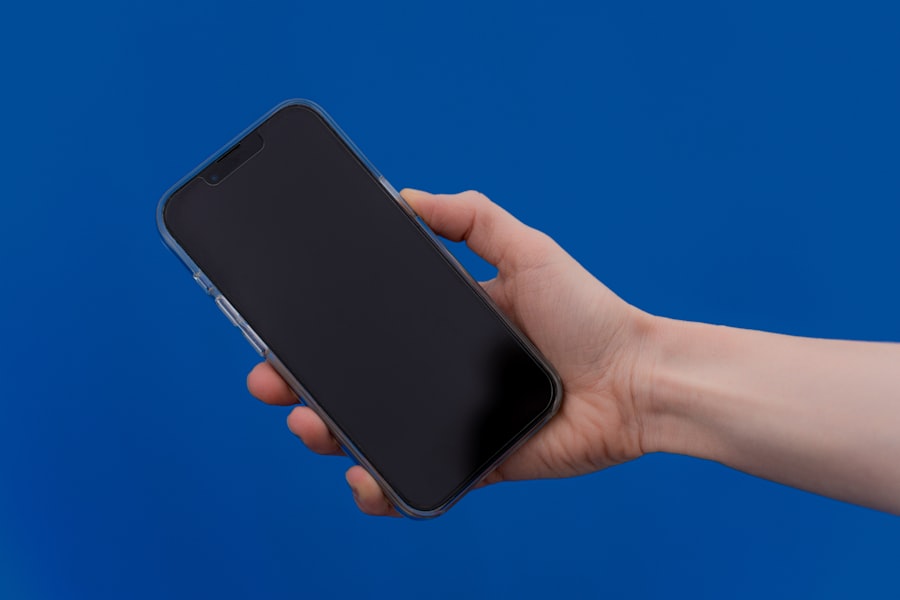In the ever-evolving landscape of technology, the iPhone stands out as a device that combines sophistication with user-friendliness. However, like any complex gadget, it can encounter issues that may hinder its performance. One of the most effective solutions to address these problems is resetting the iPhone settings.
This process involves restoring the device’s settings to their factory defaults without erasing personal data, such as photos, messages, and apps. Understanding the nuances of this process is essential for any iPhone user who wishes to maintain optimal device performance. Resetting iPhone settings can be a daunting prospect for many users, especially those who may not be well-versed in technology.
However, it is a straightforward procedure that can yield significant benefits. By delving into the various aspects of resetting settings, users can gain insights into when and why they might consider this option. From troubleshooting connectivity issues to enhancing overall performance, resetting settings can serve as a powerful tool in an iPhone user’s arsenal.
Key Takeaways
- Resetting iPhone settings can help resolve common issues and improve performance.
- Benefits of resetting iPhone settings include resolving software glitches and improving battery life.
- To reset iPhone settings, go to “Settings,” then “General,” and select “Reset” followed by “Reset All Settings.”
- Common issues that can be resolved by resetting iPhone settings include Wi-Fi connectivity problems and app crashes.
- Before resetting iPhone settings, it’s important to backup your data and ensure you have your Apple ID and password.
Benefits of Resetting iPhone Settings
Resolving Persistent Software Glitches
One of the primary advantages of resetting iPhone settings is the resolution of persistent software glitches that may arise over time. These glitches can manifest in various ways, such as apps crashing unexpectedly, slow response times, or connectivity issues with Wi-Fi and Bluetooth.
Restoring Default Configurations
Another notable benefit is the restoration of default configurations that may have been altered over time. Users often tweak settings to suit their preferences, but these changes can sometimes lead to unintended consequences. For instance, adjusting network settings might inadvertently affect connectivity. By resetting these settings, users can return to a stable baseline, ensuring that their device operates as intended.
Optimizing Battery Life and System Performance
This process can also help in optimizing battery life and improving overall system performance. By resetting iPhone settings, users can often eliminate problems without resorting to more drastic measures like a full factory reset.
How to Reset iPhone Settings

Resetting iPhone settings is a relatively simple process that can be accomplished in just a few steps. To initiate the reset, users should navigate to the “Settings” app on their device. Once there, they should scroll down and select “General.” Within the General menu, users will find an option labeled “Transfer or Reset iPhone.” Tapping on this will lead to a submenu where the “Reset” option is available.
Upon selecting “Reset,” users will be presented with several options, including “Reset All Settings,” “Reset Network Settings,” “Reset Keyboard Dictionary,” and more. For a comprehensive reset that restores all settings to their defaults without deleting personal data, users should choose “Reset All Settings.” After confirming their choice, the device will restart, and all settings will revert to their original state. It is important to note that this process does not erase any personal data or media stored on the device.
What Happens When You Reset iPhone Settings
| Outcome | Explanation |
|---|---|
| Data Erased | Resetting iPhone settings will erase all data and settings on the device. |
| Apps Removed | All downloaded apps will be removed from the device. |
| Customizations Lost | Any customizations made to the device settings will be lost. |
| Network Settings Reset | Wi-Fi, Bluetooth, and other network settings will be reset to default. |
| iCloud and Apple ID | Signing out of iCloud and Apple ID may be required after resetting settings. |
When an iPhone’s settings are reset, several changes occur that can significantly impact how the device functions. Primarily, all customized settings are reverted to their factory defaults. This includes Wi-Fi passwords, VPN configurations, and Bluetooth pairings.
Users will need to re-enter Wi-Fi passwords and reconnect to Bluetooth devices after the reset is complete. While this may seem inconvenient, it often resolves connectivity issues that have been plaguing the device. Additionally, resetting settings can clear out any corrupted configurations that may have developed over time.
For example, if an app has been misbehaving due to a setting conflict, resetting the relevant settings can restore normal functionality. However, it is crucial to understand that while personal data remains intact, any personalized preferences—such as wallpaper choices or notification settings—will need to be reconfigured after the reset. This aspect underscores the importance of being prepared for some re-customization post-reset.
Common Issues That Can Be Resolved by Resetting iPhone Settings
There are numerous common issues that users may encounter with their iPhones that can often be resolved through resetting settings. One prevalent problem is Wi-Fi connectivity issues. Users may find themselves frequently disconnected from their home network or unable to connect altogether.
By resetting network settings specifically, users can eliminate any misconfigurations that might be causing these disruptions. Another issue that can be addressed through resetting settings is battery drain. Over time, certain apps or background processes may consume more power than intended due to altered settings or software bugs.
By resetting all settings or specific ones related to battery usage, users can often restore their device’s efficiency and prolong battery life. This is particularly beneficial for those who rely heavily on their devices throughout the day and cannot afford unexpected shutdowns.
Precautions to Take Before Resetting iPhone Settings

Before embarking on the journey of resetting iPhone settings, it is prudent for users to take certain precautions to safeguard their data and ensure a smooth transition back to normalcy. First and foremost, backing up important data is essential. While resetting settings does not erase personal files, it is always wise to have a backup in case something goes awry during the process.
Users can utilize iCloud or iTunes for this purpose, ensuring that photos, contacts, and other vital information are securely stored. Additionally, users should take note of any specific configurations they have set up on their devices. For instance, if they have customized accessibility features or specific app permissions, documenting these changes can save time when reconfiguring after the reset.
It may also be beneficial to jot down Wi-Fi passwords and other login credentials needed for seamless reconnection post-reset.
How Often Should You Reset iPhone Settings
Determining how often one should reset iPhone settings is not a one-size-fits-all answer; it largely depends on individual usage patterns and experiences with the device. For some users who maintain their devices meticulously and rarely encounter issues, resetting settings may be an infrequent necessity—perhaps only once every few months or when a significant problem arises. Conversely, users who frequently experiment with different apps or settings may find themselves needing to reset more often.
If persistent issues arise—such as frequent app crashes or connectivity problems—it may be a sign that a reset is warranted. Ultimately, being attuned to the device’s performance and recognizing when it begins to lag or misbehave can guide users in deciding when a reset is appropriate.
Alternative Methods for Resetting iPhone Settings
While resetting all settings is a powerful tool for troubleshooting issues on an iPhone, there are alternative methods available for users who may prefer a more targeted approach. For instance, if connectivity issues are the primary concern, users can opt to reset only network settings instead of all settings. This option allows them to retain other personalized configurations while addressing specific problems related to Wi-Fi and Bluetooth connections.
Another alternative is to reset specific app settings if only one application is causing trouble. Many apps have built-in options for clearing cache or restoring default settings within their own menus. This targeted approach can often resolve issues without necessitating a broader reset of all device settings.
The Impact of Resetting iPhone Settings on Battery Life
One of the less frequently discussed benefits of resetting iPhone settings is its potential positive impact on battery life. Over time, various factors—such as background app refresh settings or location services—can lead to excessive battery drain. By resetting these specific settings or all settings entirely, users can often restore their device’s efficiency.
For example, if location services have been enabled for numerous apps unnecessarily, this could lead to significant battery consumption. After a reset, users can selectively re-enable location services only for essential applications, thereby conserving battery life while still maintaining functionality where needed. This careful management post-reset can lead to noticeable improvements in how long the device lasts between charges.
Resetting iPhone Settings for Improved Performance
Performance degradation is a common concern among smartphone users as devices age and accumulate data over time. Resetting iPhone settings can serve as an effective remedy for sluggish performance issues that may arise due to software conflicts or misconfigurations. When users reset their settings, they essentially clear out any accumulated clutter in terms of preferences and configurations that could be hindering performance.
Moreover, this process can help in optimizing system resources by eliminating unnecessary background processes that may have been inadvertently activated through various app installations or updates. Users often report smoother operation and faster response times after performing a reset—an outcome that underscores the value of this simple yet powerful procedure in maintaining an efficient device.
The Importance of Regularly Resetting iPhone Settings
In conclusion, regularly resetting iPhone settings emerges as a vital practice for maintaining optimal device performance and resolving common issues that may arise over time. By understanding the benefits and processes involved in resetting settings, users can take proactive steps toward ensuring their devices operate smoothly and efficiently. Whether addressing connectivity problems or enhancing battery life, this straightforward procedure offers a pathway to improved functionality without sacrificing personal data.
As technology continues to advance and evolve, staying informed about maintenance practices such as resetting settings becomes increasingly important for users seeking longevity and reliability from their devices. Embracing this practice not only empowers users but also enhances their overall experience with one of the most popular smartphones on the market today—the iPhone.
If you are curious about how resetting all settings on your iPhone can affect your privacy, you may want to check out the privacy policy on GetiPhoneInfo.com. This article can provide you with more information on how resetting your settings may impact your personal data and privacy settings. Additionally, if you have any further questions or concerns about resetting your iPhone settings, you can reach out to GetiPhoneInfo.com through their contact page for assistance.
FAQs
What does resetting all settings do on iPhone?
Resetting all settings on an iPhone will revert all settings to their default values. This includes network settings, privacy settings, keyboard settings, home screen layout, and more.
Will resetting all settings on iPhone delete my data?
No, resetting all settings on an iPhone will not delete your data such as photos, videos, apps, or personal files. However, it is always recommended to back up your data before performing a reset.
What settings are affected by resetting all settings on iPhone?
Resetting all settings on an iPhone will affect various settings including Wi-Fi passwords, wallpaper, display settings, privacy settings, keyboard settings, home screen layout, and more.
How do I reset all settings on my iPhone?
To reset all settings on an iPhone, go to Settings > General > Reset > Reset All Settings. You will be prompted to enter your passcode and confirm the reset.
Will resetting all settings on iPhone improve performance?
Resetting all settings on an iPhone may improve performance in some cases, especially if you are experiencing issues related to settings or configurations. However, it may not necessarily improve overall device performance.










